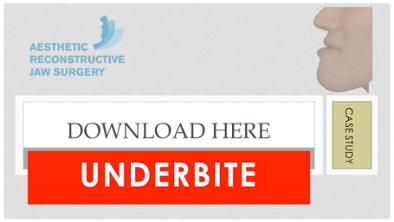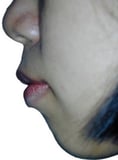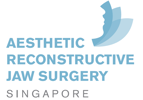Share this
Types of jaw deformities in Singapore
on May 9, 2015

The K-pop tsunami...
Last year, I accompanied my son to the Asian Games in Incheon, Korea, where he represented Singapore in fencing. He stayed in the Games Village together with the rest of Team Singapore while my wife and I booked a hotel which we thought was closeby. As it turned out, we were two hours away by train from the competition venue. However, this daily two hour commute on the train turned out to be quite an educational trip. I observed the people on the train and couldn't help but noticed that this is a very homogenous society. Be it man or woman, they all have very similar facial features. If you go to a Korean cosmetic surgeon's website, you'll find many before and after photos. The postop photos all look rather similar. Why is that so? My guess is that it's because of the homogeniety of their society. Not only do they look similar before surgery, their aesthetic sense and preference are also similar and hence they request similar procedures from their cosmetic surgeons. In Singapore, we have a much more heterogenous society, with four major ethnic groups and cross marriages. What are the common maxillofacial deformities we see in Singapore? What type of jaw deformities are less accepted and what are more accepted by the affected persons themselves?
The influence of pop culture...
Popular culture has a great influence on the way society perceives aesthetics. People's perception also change along with the trends in Hollywood. The concept of what is an aesthetic face has pretty much merged with minimal difference across different culture. In planning corrective jaw surgery, I try to understand as well as I could, the patient's aesthetic sense. Due to the cosmopolitan nature of our city state, some patients prefer a more Western look ie more prominent and angular features, while others prefer a more Oriental look that those of the Korean actresses, where the angles are shaved down to "soften" the angular features.
These are the common deformities that we see every day that can be treated with orthognathic surgery. Due to Singapore's laws forbiding the publication of before and after photos, no "after" photos are attached.
1. "Underbite"
2. "Overbite"
 The opposite of the "underbite" is the "overbite". This is when the lower jaw is way disproportionately shorter than the upper jaw, The chin is retruded and lacking in prominence. This is no distinct jaw line and the lower jaw blends into the neck. The technical term for this is Class II skeletal relation or retrognathic mandible. This condition is more common amongst the Caucasian race though it is also present amongst Asians. However, the desire of Class II patients' to have surgery is not as great as the Class III. Aesthetically, this seems to be much more accepted by patients in Singapore. However, due to the retruded position of the lower jaw, some of these patients may have obstructive sleep apnea which is best treated with corrective jaw surgery. The objective of surgery for this condition is to set the lower jaw forward and maybe the upper jaw backwards.
The opposite of the "underbite" is the "overbite". This is when the lower jaw is way disproportionately shorter than the upper jaw, The chin is retruded and lacking in prominence. This is no distinct jaw line and the lower jaw blends into the neck. The technical term for this is Class II skeletal relation or retrognathic mandible. This condition is more common amongst the Caucasian race though it is also present amongst Asians. However, the desire of Class II patients' to have surgery is not as great as the Class III. Aesthetically, this seems to be much more accepted by patients in Singapore. However, due to the retruded position of the lower jaw, some of these patients may have obstructive sleep apnea which is best treated with corrective jaw surgery. The objective of surgery for this condition is to set the lower jaw forward and maybe the upper jaw backwards.
3. Open bite
As the name the teeth in the front do not meet, leaving an open bite in front. This is usually due to excessive vertical growth of the back part of the upper jaw and deficient vertical growth of the front part. With such an uneven growth, the molars at the back will gag the bite open, preventing the front teeth from meeting. It also prevents the lips from closing, giving the patient an open mouth appearance all the time. Surgery is usually done by pushing detaching the upper jaw and differentially repositioning the back part of the upper jaw higher compared with the front. This will allow the lower front teeth to close into the upper teeth. Along with that, the lips become competent and close. Open bites are not as common as Class II and III deformities. The mild cases may not be very noticeable and patients don't seem to be bothered. The severe cases will usually be treated as having the mouth opened all the time is a signficant functional and aesthetic challenge.
4. Bimax protrusion
Bimax protrusion is arguably the most common "deformity" amongst ethnic Chinese and Malays. Most Chinese and Malays have bimax protrusion to a certain extent. It is when the degree of protrusion exceeds the patient's own tolerance level that they seek treatment for it. In this condition, the tooth bearing part of the jaw, called the alveolar bone, has grown excessively beyond what some people consider as the aesthetic limit. The facial profile is convex with the lips being pushed forward. The chin is often retruded in the group of patients as well. As it is a fairly "normal" facial profile, different patients have different threshold for the degree of protrusion before they seek surgery. In Singapore, while this facial profile is rather prevalent, the acceptance by the people who have it is pretty high. When I training in Hong Kong back in the early 90's, we do surgery to correct this almost on a daily basis. This is done by extracting four premolars and segmentalizing the jaw into three or four pieces and then fitting them back together in a more retruded position and at the same time moving the chin forward. In Singapore, many patients opt for a non surgical approach using only orthodontics alone. Orthodontics can minimize the amount of protrusion but cannot achieve the kind of change in facial profile that surgery can.
5. Gummy smile
This is also another common condition and it often occurs along with bimax protrusion. The underlying problem can be due to excessive gum tissue covering the teeth, in which case a simple trimming of the gum will soft the problem Here we are talking about gummy smiles due to excessive vertical growth the upper jaw. To correct his kind of gummy smile, the surgery is similar that described for bimax protrusion. More details on gummy smile can be found here.
6. Asymmetry
The secondary growth centre of the lower jaw is in the condyles. This is the part of the lower jaw that together with the fossa, forms the temporomandibular joints. Some times, the growth centre of the one of the condyles is more active than the other side. This results in more growth of the jaw bone along that side, pushing the chin point the opposing side of the face. Asymmetries should be corrected when the growth is complete and for boys, that can mean only when they are in their twenties. This is because the hyperactive grwoth of one of the condyle may not burn out till much later. As a crooked face gives the person an unpleasant look, treatment for this is fairly well sought after in Singapore.
The above list is by no means exhaustive but will serve as a guide as to what kind of facial deformities can be done to achieve better aesthetics. However, this does not replace a professional assessment by a maxillofacial surgeon.. The gross deformities are easy to recognize but the more subtle ones are more difficult to diagnose. In real life, there are combinations of different deformities and careful assessment is needed to determine what surgery is needed. If you think that you have a jaw deformity that you do not like, consult an oral maxillofacial surgeon.
Share this
- Jaw Surgery (93)
- Dental Implants Singapore (90)
- Orthognathic Surgery (48)
- Replacing Missing Teeth (26)
- Missing Teeth Options (23)
- Underbite (23)
- Bone Grafting (21)
- Costs (18)
- Facial Aesthetics (18)
- Aesthetics (17)
- dental implants (16)
- corrective jaw surgery (15)
- BOTOX (11)
- Dermal Fillers (11)
- Wisdom teeth (10)
- Fixed Implant Dentures (8)
- Loose Dentures Singapore (6)
- Medisave (6)
- sleep apnea (6)
- Braces (5)
- Dental Pain (5)
- Dentures in Singapore (5)
- Loose Teeth (5)
- Tooth Extraction (5)
- jaw deformities (5)
- bimax (4)
- bone graft (4)
- maxillomandibular advancement (4)
- all-on-4 (3)
- bimaxillary protrusion (3)
- chin implant (3)
- facial asymmetry (3)
- full mouth dental implants (3)
- genioplasty (3)
- immediate implant (3)
- removal of an integrated dental implant (3)
- third molars (3)
- wisdom tooth surgery (3)
- My Dentures Don't Fit (2)
- VME (2)
- bone graft healing (2)
- distraction osteogenesis (2)
- medical tourism (2)
- obstructive sleep apnea (2)
- orthodontics (2)
- plastic surgery (2)
- CT guided dental implants (1)
- Double jaw surgery (1)
- Invisalign (1)
- Periodontal Disease (1)
- Permanent Dentures Singapore (1)
- before and after photos (1)
- facial trauma (1)
- fractured dental implant (1)
- oral appliance therapy (1)
- root canal treatment (1)
- veneers (1)
- vertical maxillary excess (1)
- September 2019 (2)
- July 2019 (2)
- May 2019 (2)
- August 2018 (1)
- October 2017 (1)
- September 2017 (2)
- August 2017 (1)
- June 2017 (2)
- May 2017 (4)
- April 2017 (1)
- March 2017 (1)
- February 2017 (3)
- January 2017 (3)
- December 2016 (1)
- November 2016 (2)
- October 2016 (4)
- September 2016 (9)
- August 2016 (5)
- July 2016 (11)
- June 2016 (14)
- May 2016 (6)
- April 2016 (2)
- March 2016 (1)
- January 2016 (7)
- December 2015 (10)
- November 2015 (4)
- October 2015 (9)
- September 2015 (7)
- August 2015 (1)
- July 2015 (6)
- June 2015 (3)
- May 2015 (7)
- April 2015 (5)
- March 2015 (8)
- January 2015 (5)
- December 2014 (7)
- November 2014 (7)
- October 2014 (6)
- September 2014 (8)
- August 2014 (5)
- July 2014 (7)
- June 2014 (8)
- May 2014 (9)
- April 2014 (10)
- March 2014 (6)
- February 2014 (8)
- January 2014 (3)
Subscribe by email
Email subscription





Comments (1)